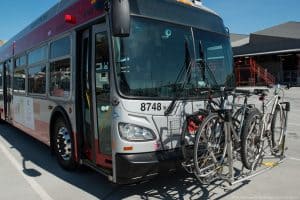
 On Monday, August 28, 2017, Culver City’s Transit Oriented Development (TOD) Visioning Study consultant, Johnson Fain, presented preliminary project recommendations to the City Council. The Study focuses on the future of mobility in Culver City around the TOD with the Expo Station at its core, exploring linkages with Downtown Culver City and the surrounding neighborhoods. It is the product of six months of work and numerous public workshops with community groups and City staff, as well as public input on the interactive website at www.culverTODvision.org.
On Monday, August 28, 2017, Culver City’s Transit Oriented Development (TOD) Visioning Study consultant, Johnson Fain, presented preliminary project recommendations to the City Council. The Study focuses on the future of mobility in Culver City around the TOD with the Expo Station at its core, exploring linkages with Downtown Culver City and the surrounding neighborhoods. It is the product of six months of work and numerous public workshops with community groups and City staff, as well as public input on the interactive website at www.culverTODvision.org.
The Visioning Study’s goal is to increase the viability of a variety of mobility modes for residents and other users by developing more and better choices. The Visioning Study seeks to establish the TOD area and its neighborhood vicinity as a “pedestrians first” environment; to advance the use of transit for first/last mile connections and local circulation; to provide a safe and protected network for cycling as a choice; to divert the flow of traffic around and through the TOD area to minimize conflicts with other modes; and to conserve and protect the character and quality of the existing residential neighborhood.
To meet these goals, the City’s consultant team outlined a series of mobility concepts for consideration, including both near-term improvements and long-term strategies within an overall mobility framework. These recommendations include:
Improving access to the downtown/commercial core and eastside employment centers from the perimeter, while protecting interior neighborhood circulation from cut-through traffic.
Establishing a system of flexible on-demand micro-transit for area residents and employees and facilitating the efficiency of transit and micro-transit through dedicated street lanes and strategic connections.
Redesigning street intersections in the district for pedestrian priority with more frequent and improved crosswalks and implementing neighborhood protection interventions focused on the safety of pedestrians.
Improving the Washington/Culver corridor as the city’s major local east/west bike spine and developing a network of bike lanes, paths, and sharrows to connect local and regional systems with additional connections to the Ballona Creek Bike Path.
Working toward a peripheral shared parking plan with congestion pricing, connected with the proposed micro-transit system.
Planning for more substantial infrastructure improvements, including additional crossings of Ballona Creek for vehicular access to east side employment centers and coordinating with other jurisdictions toward an improved through-traffic bypass solution.
Implementing over time a ‘complete streets” design for Washington Blvd., placing priority on enhancing the convenience and safety of the pedestrian experience, facilitating use of the street by transit and other high-occupancy vehicle circulation, and providing a safe and connected place for cyclists.
Expanding the existing TOD district boundaries and adopting a TOD ordinance including urban design guidelines, re-defined parking requirements, and encouragement of affordable housing.
Enacting a Transportation Demand Management ordinance and establishing a Transportation Management Association / Organization to manage a Mobility Fund, develop an education and outreach program, and introduce “smart” wayfinding and information systems.
These are some of the recommendations presented informally to the City Council for initial comment and review. The final Study recommendations are anticipated to be presented to the City Council in the near future.
For more information about the Culver City TOD Visioning Study, please contact Lisa Pangelinan at (310) 253-5761 or [email protected].


Be the first to comment